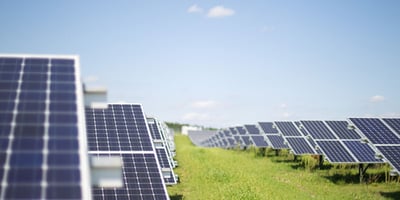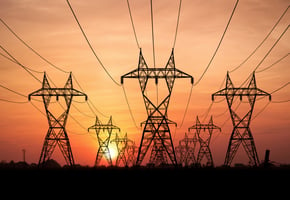According to the International Energy Agency (IEA), renewable capacity has significantly increased,...
Actionable Solutions for the Blackout Risks Reported by NERC
In a recent report by the North American Electric Reliability Corp. (NERC), concerns regarding the increasing risk of blackouts in the United States over the next decade have come to the forefront. Factors such as rising peak demand for electricity and the planned retirement of a substantial portion of fossil fuel and nuclear power generation capacity have underscored the vulnerabilities in the nation's power grid. The repercussions of blackouts extend beyond mere inconvenience, affecting communities' health, safety, and prosperity.
This article delves into the critical issues highlighted in the NERC report and explores how Artificial Intelligence can be pivotal in addressing these challenges. From predictive maintenance to grid optimization and renewable energy integration, AI technologies offer innovative solutions to enhance energy reliability and minimize the risk of blackouts.
Understanding Blackout Risks Identified by NERC
NERC's annual Long-Term Reliability Assessment report paints a concerning picture of the reliability of the U.S. power grid. The following issues underscore the need for proactive measures to enhance energy reliability and grid resilience:
- Rising Peak Demand: The United States is grappling with an increase in peak electricity demand. That heightened demand, especially during extreme weather conditions, presents a significant challenge for grid operators.
- Planned Retirement of Power Generation: Over the next decade, approximately 83 gigawatts (GW) of fossil fuel and nuclear power generation capacity are slated for retirement. This retirement could lead to supply shortfalls during peak operations, particularly in regions heavily dependent on these sources.
- Regional Vulnerabilities: While most regions are expected to have sufficient electricity supply under normal weather conditions, the Northeast and Western regions of the U.S. face an elevated risk of blackouts during extreme conditions. Furthermore, parts of the Midwest and central South regions could experience power supply shortfalls during normal peak operations.
Leveraging AI to Address Blackout Risks
Artificial Intelligence offers numerous opportunities to mitigate the identified blackout risks and enhance energy reliability in the United States. Here are several ways AI can contribute to this effort:
Predictive Maintenance:
- Asset Health Monitoring: AI can continuously monitor the health of critical infrastructure components such as transformers, substations, and transmission lines. By analyzing sensor data, AI can predict when equipment will likely fail, enabling utilities to schedule proactive maintenance and prevent unplanned outages.
- Condition-Based Monitoring: AI-powered algorithms can assess the real-time condition of grid assets and provide insights into potential issues. By detecting anomalies, AI can help utilities identify and address problems before they escalate.
Grid Optimization:
- Load Forecasting: AI can accurately predict electricity demand patterns by analyzing historical data, weather conditions, and socio-economic factors. That allows grid operators to optimize generation and distribution to meet demand efficiently.
- Dynamic Grid Control: AI-driven grid management systems can make real-time adjustments to power generation and distribution, ensuring grid stability even during sudden fluctuations in supply or demand.
Renewable Energy Integration:
- Intermittency Management: Integrating renewable energy sources like wind and solar into the grid poses challenges due to their intermittency. AI algorithms can predict renewable energy generation patterns and help grid operators balance supply and demand accordingly.
- Energy Storage Optimization: AI can optimize energy storage solutions like batteries to store excess energy during periods of low demand and release it during peak demand, reducing stress on the grid.
Grid Resilience:
- Fault Detection and Response: AI systems can quickly identify faults in the grid and reroute power to minimize disruptions. This proactive approach can prevent cascading failures and blackouts.
- Cybersecurity: AI-powered cybersecurity tools can detect and thwart cyber threats, protecting critical grid infrastructure from malicious attacks that could disrupt operations.
Grid Planning:
- Resource Allocation: AI can assist in optimizing the allocation of resources, such as the construction of new gas capacity and the expansion of the transmission network, to address identified vulnerabilities in the grid.
- Scenario Analysis: AI can simulate various scenarios, including extreme weather events and changes in energy policies, to help grid planners develop robust contingency plans.
Conclusion
The NERC report highlighting the increasing risk of blackouts in the United States underscores the urgent need for innovative solutions to enhance energy reliability and grid resilience. Artificial Intelligence is a powerful tool to address these challenges by enabling predictive maintenance, optimizing grid operations, facilitating renewable energy integration, and improving grid planning.
In a rapidly evolving energy landscape, harnessing the capabilities of AI can not only mitigate blackout risks but also pave the way for a more sustainable, efficient, and reliable energy future in the United States. As we look ahead, collaboration between industry stakeholders, policymakers, and AI innovators will be essential to realize the full potential of AI in transforming the energy grid and ensuring grid reliability.
To learn about some of the ways we enable AI to ensure grid reliability, visit our Use Cases section or contact us today!


-3.png?height=200&name=Copy%20of%20Title%20(1200%20x%20628%20px)-3.png)